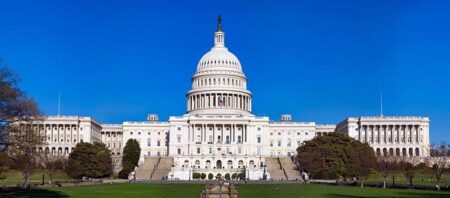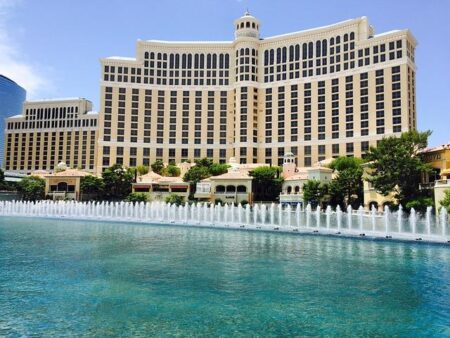Understanding the Decline in Las Vegas Tourism: Economic Pressures and Policy Impacts
Once celebrated as a global hotspot for entertainment and leisure, Las Vegas is currently witnessing a notable drop in tourist arrivals. Industry analysts link this downturn to a blend of economic pressures and policy changes that have collectively undermined the city’s allure. Notably, the imposition of tariffs on imported goods has escalated operational expenses for casinos and hotels, which in turn has led to increased prices for visitors. Concurrently, more stringent immigration regulations have restricted the availability of seasonal and service workers, resulting in labor shortages and a decline in service quality.
These intertwined issues have disrupted the local economic framework, influencing travel behaviors and visitor choices. Key contributors to this trend include:
- Higher operational costs driven by tariffs on essential hotel and gaming supplies
- Labor shortages due to tightened immigration enforcement
- Negative perceptions surrounding immigration policies affecting international tourist inflows
- Changing visitor preferences with some travelers opting for destinations with fewer economic and regulatory constraints
In response, local business leaders and policymakers are advocating for reforms to rejuvenate Las Vegas’s tourism industry.
| Area of Impact | Resulting Effect |
|---|---|
| Tariffs on Imports | 12% increase in operational expenses |
| Immigration Restrictions | 15% reduction in hospitality workforce |
| Tourism Volume | 8% decline year-over-year |
How Tariffs Are Reshaping Visitor Spending and Casino Earnings
The recent surge in tariffs on imported products has had a cascading effect on Las Vegas’s tourism economy, especially impacting international visitors’ spending habits. Elevated costs for consumer goods have curtailed tourists’ disposable income, prompting a shift toward more economical travel choices. Casinos, which heavily depend on discretionary spending, especially from affluent visitors from countries like China and Canada, have reported a downturn in revenue. This financial strain is compounded by stricter visa regulations, which have made it more challenging for foreign tourists to visit.
- Visitor expenditure has decreased by roughly 8% compared to the previous year.
- Casino income linked to international guests dropped by 12% in the last quarter.
- High-stakes gaming tables have seen fewer foreign participants due to tougher visa controls.
To better understand this trend,consider the following revenue data:
| Quarter | International Visitor Spending | Casino Revenue (in millions) |
|---|---|---|
| Q1 2019 | $860M | $435M |
| Q1 2020 | $790M | $385M |
| Q1 2021 | $730M | $378M |
These figures highlight a persistent decline,exacerbated by the uncertain economic environment created by tariff disputes and immigration restrictions. Experts caution that without policy revisions, Las Vegas’s tourism-dependent economy may continue to suffer, impacting not only casinos but the wider hospitality industry.
Immigration Policy Changes: Workforce Challenges and Hospitality Sector Impact
The tightening of immigration policies has profoundly affected the labor market in Las Vegas, especially within the hospitality industry, where immigrant workers constitute a significant portion of the staff. The enforcement measures have led to a notable decrease in available labor, causing staffing shortages across casinos, hotels, and restaurants. This scarcity has forced many businesses to reduce operating hours, limit service offerings, and raise wages to attract a smaller pool of domestic workers, thereby increasing operational costs and diminishing visitor satisfaction. Industry insiders emphasize that these shifts disrupt the city’s ability to function as a nonstop entertainment capital.
The repercussions extend beyond staffing, influencing the overall visitor experience and local economy. Reported challenges include:
- Longer wait times at dining and entertainment venues
- Reduced event capacities due to insufficient staffing
- Higher maintenance expenses as fewer employees manage more responsibilities
The following table illustrates the workforce composition before and after the implementation of stricter immigration policies:
| Workforce Segment | Before Policy Change (%) | After Policy Change (%) |
|---|---|---|
| Immigrant Employees | 46 | 29 |
| Domestic Employees | 54 | 71 |
| Vacant Positions | 4 | 16 |
Revitalization Efforts: Strategies to Boost Las Vegas Tourism Amid Policy Changes
In response to the tourism slump, Las Vegas officials and industry leaders are implementing thorough strategies aimed at enhancing the city’s attractiveness and easing access for international visitors.Key measures include streamlining visa submission processes to encourage more foreign tourists and partnering with airlines to establish direct flights from emerging markets. Moreover, there is a concerted effort to diversify the city’s offerings by promoting cultural and family-pleasant attractions beyond the traditional casino environment, targeting younger travelers and families.
- Robust marketing campaigns focused on new and growing travel markets
- Investment in infrastructure improvements to facilitate smoother airport and urban transit
- Collaborations with entertainment firms to broaden event variety and appeal
| Initiative | Projected Outcome |
|---|---|
| Visa Process Simplification | 15% increase in international tourist arrivals |
| New Direct Flight Routes | 20% advancement in connectivity with Asia and Europe |
| Family-Oriented Events | Attract younger demographics and diversify visitor age groups |
Final Thoughts: Navigating the Future of Las Vegas Tourism
As Las Vegas confronts a downturn in tourism, the influence of economic policies and immigration enforcement remains a focal point of discussion. While some experts attribute the decline to the tariffs and immigration measures enacted during the Trump management, others emphasize a broader array of challenges affecting the hospitality sector. Moving forward, it will be crucial for stakeholders to continuously evaluate these factors and implement adaptive strategies to restore the dynamic influx of visitors that has historically fueled Las Vegas’s economic vitality.




